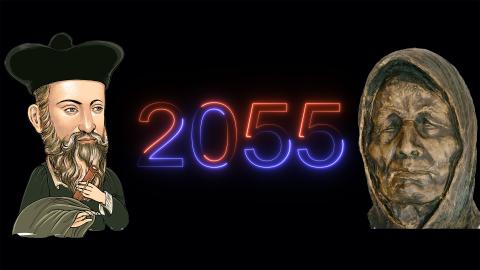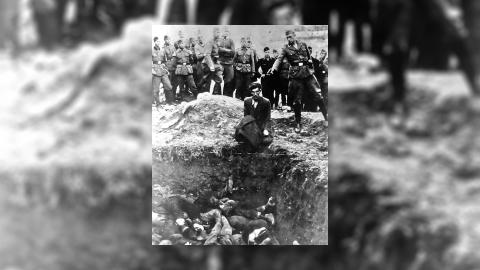Where did the Templar treasure go?
A sword engraved with Templar crosses. An ornate libation vessel hewn from alabaster. An iron box depicting Biblical images. These are some of the tantalising treasures in the possession of Carl Cookson and Hamilton White – two intrepid collectors who are delving into the history of their incredible finds in Lost Relics of the Knights Templar.
Could any of the artefacts in Carl and Hamilton’s hoard actually be part of the fabled lost treasure of the Templars? If so, their dogged research may change our whole understanding of what happened to order after their dramatic and bloody downfall in the 14th Century.
Soaring rise, savage fall
Over hundreds of years, the Templars had evolved from a small, rag-tag order of devout warriors and bodyguards, to one of the most powerful organisations on Earth. They may have officially been the ‘Poor Fellow-Soldiers of Christ’, but the order had effectively become a multinational business empire, controlling fleets of ships and vast tracts of land, including farms, water mills and vineyards.
The Templars built up their incredible wealth through numerous income streams. Famously, they established an early banking network which crisscrossed Europe and the Middle East. Pilgrims heading to the Holy Land would deposit their money with one Templar house and receive a letter of credit which would let them withdraw their funds at another ‘branch’ elsewhere on their journey. The exact wording of these letters of credit, and how they prevented fraud by unscrupulous pilgrims, remains a great historical riddle. It’s likely the letters contained secret cyphers that only Templars could understand, proving they were authentic.
The Templars even operated as banks and brokers for the richest and most powerful people in Christendom
The order also made money from booty they captured on the front lines, and – more importantly – received many grand donations from patrons who wanted to confirm their Christian credentials. As an essay on the Templars in the American Historical Review put it in 1902, ‘Gifts to the order had been considered acts of piety calculated to promote the eternal welfare of the giver’s soul, a subject in which the average man of the Middle Ages was most deeply interested.’
The Templars even operated as banks and brokers for the richest and most powerful people in Christendom. Royals would deposit their wealth in Templar coffers, and they would use Templars as their intermediaries when purchasing land (England’s Henry III bought an island off the coast of France by sending the money through his Templar representatives).
It’s also been speculated the Templars had their sights on ancient treasures in the Holy Land. The order’s first base was the Al-Aqsa Mosque in Jerusalem, which had been captured and repurposed by the Crusaders. This building is located on the Temple Mount, where King Solomon’s Temple once stood, and it’s said the Templars dug beneath the mosque on the hunt for long-lost Christian relics like the Spear of Destiny and the Ark of the Covenant. Archaeologists in the Victorian period excavated the Temple Mount and did find what seemed to be Templar artefacts, such as a sword and a cross, indicating the knights had indeed been on a treasure hunt there.
But all of this came to a brutal end in 1307. Rumours circulated of the order conducting secret, diabolical rituals, and Philip IV of France – who was in debt to the Templars – used this example of medieval ‘fake news’ as an excuse to crack down on the order. Mass arrests and executions of Templars across France and the rest of Europe followed, with the entire organisation being abolished several years later. But a major mystery remains from this chapter of history: what became of the money and mythical treasures which the Templars allegedly amassed?
The riddle of the riches
Countless theories swirl around the fate of the Templars’ fabled wealth. Many believe that gold, silver and secret religious treasures stored in Paris were smuggled out of the city in hay carts on the eve of the crackdown. During the Templar trials, a brother named Jean de Chalon testified that the Preceptor of the French Templars, Gerard de Villiers, had been tipped off about the imminent arrests and led over 50 horses out of Paris, before ‘setting out to sea with 18 galleys’.
Where did this fleet actually set out from? The port city of La Rochelle is a favoured candidate, although some speculate the ships escaped via the Seine. The destination of these ships has been debated for generations. Did they find asylum in Scotland, as some writers have pondered? According to one highly controversial line of thought, these escaping Templars may have helped Robert the Bruce beat the English forces in the Battle of Bannockburn in 1314. It’s even been suggested that descendants of the Templar settlers in Scotland eventually sailed to the New World, taking their treasure to Oak Island Novia Scotia, where it was buried in the notorious ‘Money Pit’.
The quest to track down this ‘lost fleet’, and the associated riches, continues. As Sean Martin, author of The Knights Templar, puts it: ‘How many Templar ships sailed from La Rochelle in the autumn of 1307 is unknown – what they were carrying likewise – but one thing is known: the Templar fleet vanished utterly.’
Now, Carl Cookson and Hamilton White are hoping their investigation will shed new light on what became of the fleeing knights and their mysterious hidden marvels. And maybe, just maybe, they’ll prove their own relics were once among the treasures the Templars smuggled away before Philip IV could lay his hands on them.
















